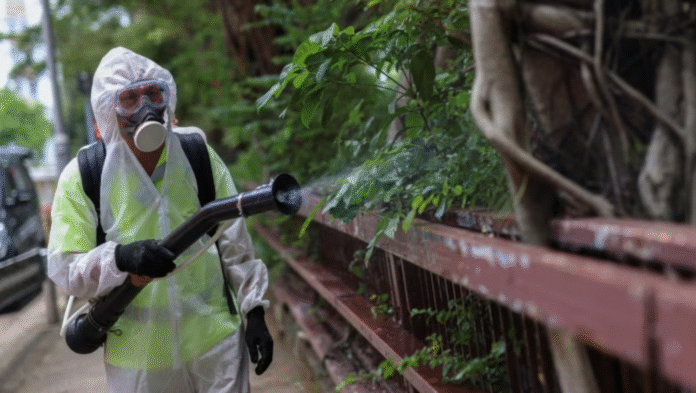China Chikungunya Virus Outbreak: Over 7,000 Cases Raise Alarm
The China chikungunya virus outbreak has sparked widespread concern, with more than 7,000 confirmed cases reported in Guangdong province since July. Authorities are implementing strict public health measures, some reminiscent of COVID-19 restrictions, to contain the mosquito-borne illness.
The city of Foshan, the hardest hit by the outbreak, is seeing hospitals place chikungunya patients under strict care. Hospital beds are now surrounded by mosquito nets, and patients can only be discharged after testing negative or completing a mandatory seven-day stay.
What is Chikungunya Virus and Why It Matters
The chikungunya virus is transmitted through the bite of infected Aedes mosquitoes. While not typically fatal, it can cause fever, severe joint pain, rash, headaches, and muscle pain. In some cases, joint pain can persist for months or even years, affecting the quality of life.
Originally identified in Tanzania in 1952, the virus has since spread to over 110 countries, particularly in South Asia, Southeast Asia, and Africa. According to the World Health Organization (WHO), prevention is focused on reducing mosquito breeding grounds, especially stagnant water sources.

Spread of the Virus in China
Aside from Foshan, at least 12 other cities in Guangdong province have reported infections. Nearly 3,000 new cases emerged in the past week alone, and Hong Kong recently confirmed its first case, a 12-year-old boy who had traveled to Foshan.
Authorities have stressed that the virus is not contagious between people. It spreads only when mosquitoes bite infected individuals and then transmit it to others.
So far, 95% of patients have been discharged within seven days, with most cases considered mild. However, the China chikungunya virus outbreak has caused public unease due to its long-term joint pain effects.
China’s Response to the Outbreak
Authorities are deploying aggressive containment measures across Guangdong:
-
Public Alerts urging residents with symptoms, fever, joint pain, or rash, to get tested.
-
Mosquito Breeding Control: Residents must eliminate stagnant water from homes, including in flowerpots, buckets, and unused containers. Failure to comply could result in fines up to 10,000 yuan ($1,400).
-
Biological Controls: Release of “elephant mosquitoes” that prey on smaller, virus-spreading mosquitoes, and 5,000 mosquito-eating fish deployed in city lakes.
-
Drone Surveillance: Authorities are flying drones to detect hidden water sources where mosquitoes breed.
Some cities briefly introduced a 14-day home quarantine for travelers from Foshan, though this has now been lifted.
Comparing to Past Pandemic Measures
The intensity of these measures has drawn comparisons to China’s COVID-19 pandemic response, which included sudden lockdowns, mass quarantines, and sealing off entire residential areas.
On social media platform Weibo, users expressed mixed feelings:
-
“This feels so familiar… but is it really necessary?”
-
“What’s the point of quarantine? It’s not like an infected person will bite others.”

Chikungunya Risk Groups
While most patients recover fully within a week, certain groups face higher risks of prolonged symptoms:
-
Elderly individuals
-
Newborns
-
Patients with chronic illnesses (heart disease, diabetes)
These vulnerable groups may experience long-term joint inflammation, which can significantly impact mobility. China Chikungunya Virus Outbreak record 7000 cases.
Lessons from Global Outbreaks
Chikungunya has caused major outbreaks in India, Indonesia, and the Philippines in the past decade. In these regions, coordinated mosquito control programs, including public awareness campaigns, insecticide spraying, and water management, helped curb the spread.
China is now employing similar strategies, with the added use of biological mosquito predators and advanced drone technology.
Travel Advisories and Global Concern
The United States has issued an “increased caution” travel advisory for China, urging visitors to take preventive measures against mosquito bites, such as using repellents and wearing long sleeves.
The WHO continues to emphasize that prevention is key, as no vaccine or specific antiviral treatment exists for chikungunya.
How You Can Protect Yourself
Here are preventive measures recommended by health authorities:
-
Remove stagnant water around your home.
-
Use mosquito repellents containing DEET, picaridin, or IR3535.
-
Install window and door screens to keep mosquitoes out.
-
Wear long-sleeved clothing, especially during dawn and dusk when mosquitoes are most active.

